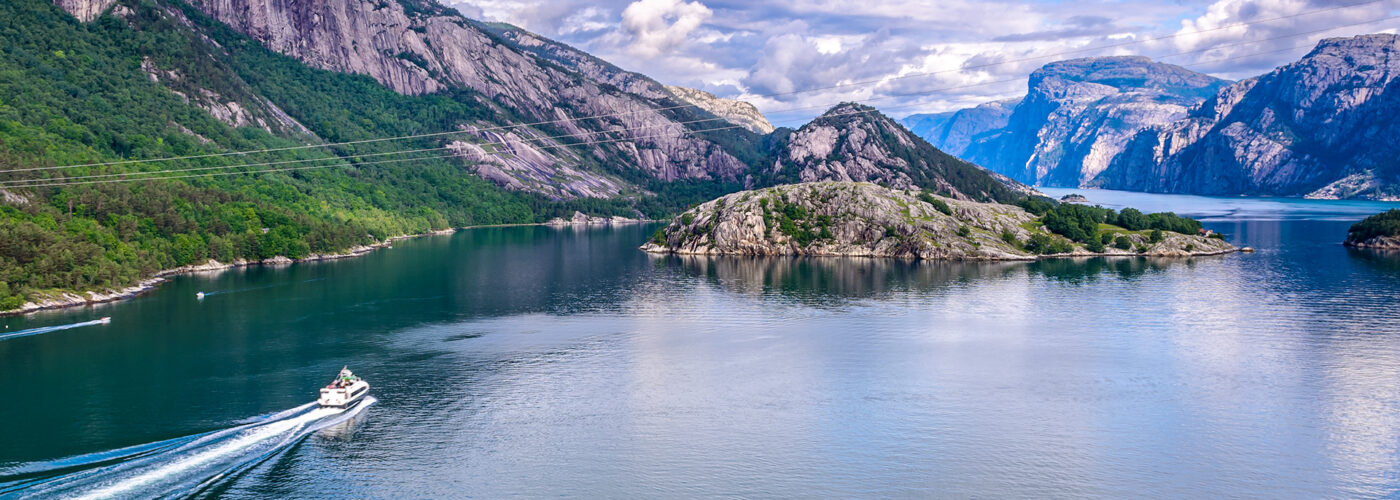Are you an eco-adventurer? If your idea of a perfect trip is getting up close and personal with the natural world, you’ll want to check out one of these dream destinations for ecotourists. From lush jungles and colorful coral reefs to sprawling savannas and fabulous fjords, the five regions we’ve selected encompass some of the earth’s most distinctive ecosystems.
To make our list, it wasn’t enough for a place to be blessed with extraordinary natural resources; it was equally important that those resources are being cared for. We chose these five destinations not only for their unique biodiversity but also for a local commitment to maintaining the beauty and integrity of these places through sustainable tourism. And remember — visitors must do their part as well, as the parts of the earth with the greatest ecological diversity are often the most threatened. If you choose to visit, it’s more important than ever to follow our green travel tips to ensure that these places remain beautiful and unspoiled for many years to come.
Palau

Long before it was featured on Survivor, the island nation of Palau was recognized as one of the world’s foremost diving destinations. In the crystal-clear sea just off the coast is a colorful underwater wonderland, featuring more than 500 species of coral teeming with some 1,400 kinds of fish. On land, travelers can wander along unspoiled beaches or go trekking through dense jungles.
Palau’s remote location in the westernmost corner of Micronesia has helped to shield both its natural resources and its cultural traditions from the detrimental effects of mass tourism, and the locals are working to make sure their island paradise stays pristine well into the future. About 460 miles of reefs and lagoon waters are dedicated no-fishing zones, which has allowed many endangered species of fish to repopulate the area. The Palau Conservation Society manages nearly two dozen conservation areas and encourages sustainable development to protect the islands’ fragile ecosystems.
Norwegian Fjords

Their remote location and strict environmental regulations have helped preserve the pristine beauty of Norway’s famous fjords, with their snowcapped mountains, tumbling waterfalls and crystal-clear waters. Visitors can go hiking or biking over the rugged terrain, or take a scenic boat ride through the towering fjords. A wide variety of wildlife lives here, including eagles, seals, porpoises and seabirds. Along with the region’s natural attractions, the fjords are also home to many small fishing villages where local cultural traditions have survived for hundreds of years.
As an international leader in environmental policy, Norway has taken care to protect its unique coastline by regulating the fishing, whaling, sealing and petroleum industries.
Costa Rica

Costa Rica is practically synonymous with the term “ecotourism,” and for good reason. Misty cloud forests, black sand beaches, thick rain forests, and rushing river rapids offer outdoor activities for active travelers and nature enthusiasts. A dazzling array of creatures, including monkeys, sloths, crocodiles, jaguars, sea turtles and poison dart frogs, live in Costa Rica’s many national parks. Costa Rica is widely known for its proliferation of wildlife refuges and the diversity of its animals and plants.
Environmentally conscious travelers have their choice of eco-friendly accommodations; the Key to Costa Rica maintains lists of green hotels, resorts, and lodges.
Kerala, India

The small state of Kerala, on India’s southwestern coast, is often referred to as “God’s Own Country”, a label that doesn’t seem at all hyperbolic once you’ve visited its clean sandy beaches and lush virgin forests. This is one of India’s most unspoiled corners, home to hundreds of unique animal species and nearly a quarter of the country’s 10,000 plant species. The Nilgiri tahr, an endangered mountain goat, takes shelter in Rajamala National Park, while elephants, bison, and wild boar roam freely within the Lake Periyar Wildlife Sanctuary.
In the past, Kerala’s ecosystems were threatened by excessive forest clearing, but these days many of the state’s forests are now protected, and tourist officials are encouraging environmentally responsible travel to the area.
Kenya

Kenya is best known for its wide savannas teeming with lions and elephants, but most travelers don’t know that it’s also home to mountains, lakes, rain forests, deserts and beaches, each with its own unique ecosystem and wildlife. Kenya’s incredible natural diversity is protected in some 50 national parks and reserves across the country, from the virgin rain forests of the Kakamega Forest Reserve to the wildebeests who migrate to the Masai Mara National Reserve every July and August.
On the coast, travelers can walk down pristine white beaches or go diving along colorful coral reefs. All tourism occurs under the watchful eye of Ecotourism Kenya, which works to protect the local environment through community outreach and education projects. The organization also rates lodges throughout Kenya based on its environmental policies. Learn more about Kenya in Planning an African Safari.
More from SmarterTravel:
Editor’s note: This story was originally published in 2017. It has been updated to reflect the most current information.
We hand-pick everything we recommend and select items through testing and reviews. Some products are sent to us free of charge with no incentive to offer a favorable review. We offer our unbiased opinions and do not accept compensation to review products. All items are in stock and prices are accurate at the time of publication. If you buy something through our links, we may earn a commission.
Related
Top Fares From
Today's Top Travel Deals
Brought to you by ShermansTravel
France: 8-Night Paris, Avignon & Nice...
Infinity Worldwide Vacations
 vacation
$2880+
vacation
$2880+
Poconos: 3 Nts in Garden of...
ResortsAndLodges.com
 hotel
$305+
hotel
$305+
7-Nt Canada & New England Cruise,...
Princess Cruises
 cruise
$839+
cruise
$839+




